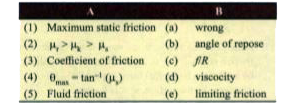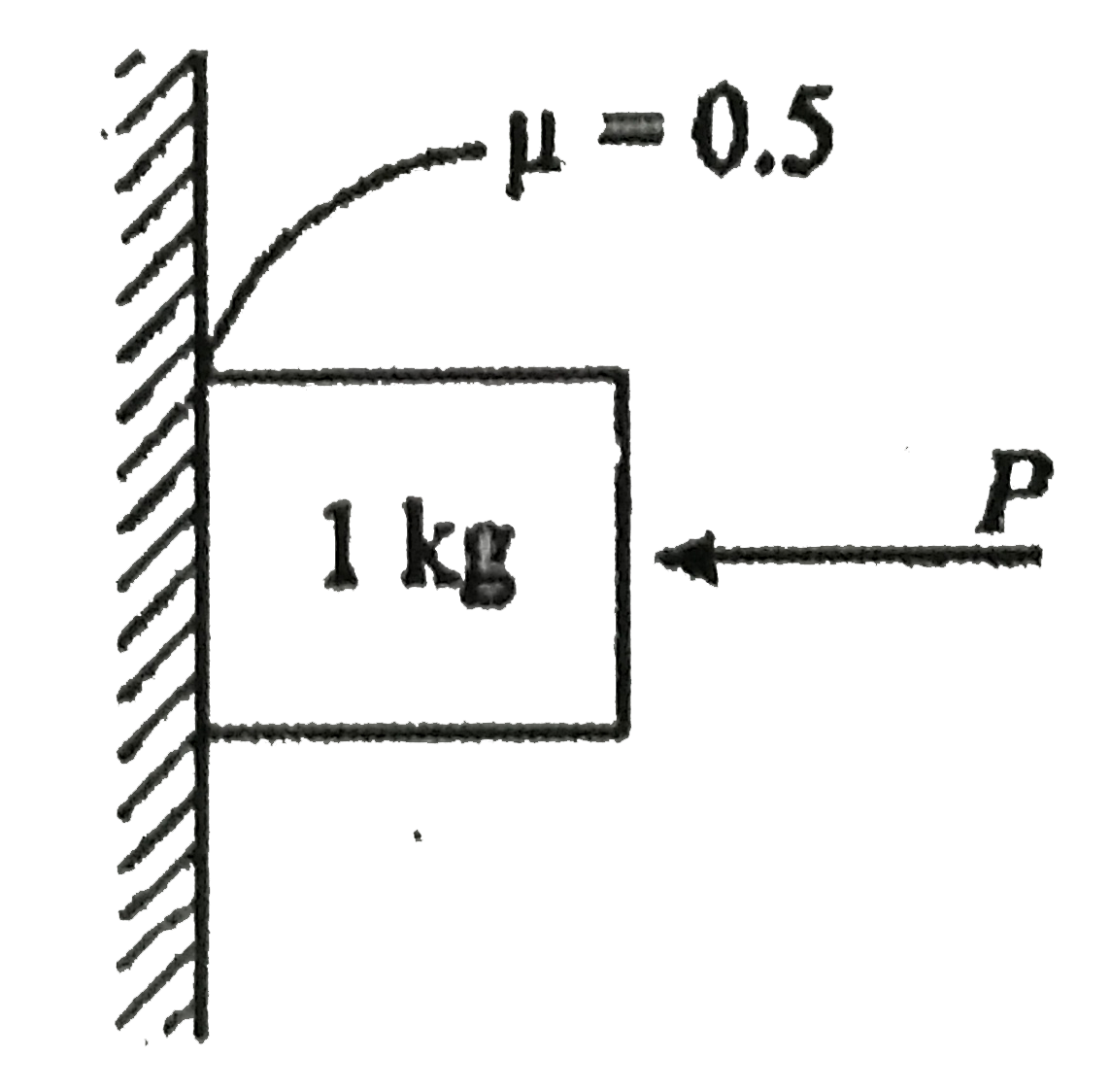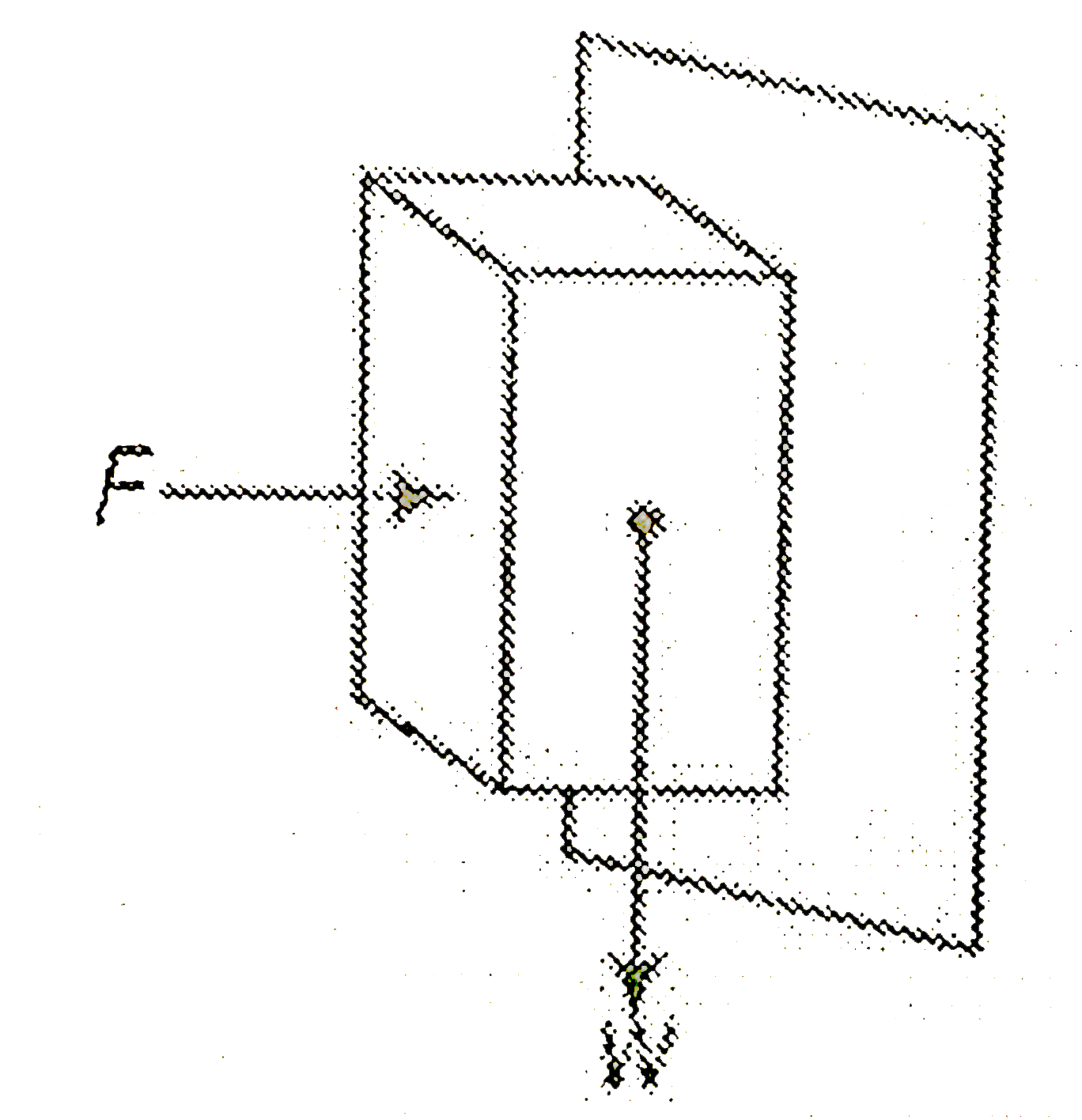You can keep a book pressed against a wall and prevent it from falling down. Can this horizontal force applied cancel the weight which is a vertical force? Explain.
To understand how a book can be kept pressed against a wall without falling, we need to analyze the forces acting on the book. Here’s a step-by-step solution:
Step 1: Identify the Forces Acting on the Book
When a book is pressed against a wall, there are several forces acting on it:
- Weight (W): This is the downward force due to gravity acting on the book.
- Normal Force (N): This is the force exerted by the wall on the book, acting perpendicular to the wall.
- Frictional Force (f): This is the force that opposes the motion of the book sliding down the wall. It acts upward when the book is pressed against the wall.
Step 2: Apply the Concept of Equilibrium
For the book to remain stationary and not fall, the forces acting on it must be balanced. This means that the upward forces must equal the downward forces.
Step 3: Set Up the Force Balance Equation
In this scenario, the weight of the book (W) acts downward, while the frictional force (f) acts upward. For the book to be in equilibrium:
f=W
This means that the frictional force must be equal to the weight of the book to prevent it from falling.
Step 4: Understand the Role of the Applied Force
When you press the book against the wall, you apply a horizontal force (F). This force causes the wall to exert a normal force (N) on the book. The frictional force is proportional to the normal force:
f=μN
where μ is the coefficient of friction between the book and the wall.
Step 5: Conclusion
Thus, the horizontal force you apply does not directly cancel the weight of the book. Instead, it creates a normal force that increases the frictional force. If the frictional force is sufficient to balance the weight of the book, the book will not fall.
Summary
In conclusion, while the horizontal force applied does not cancel the weight directly, it increases the normal force, which in turn increases the frictional force that can counteract the weight of the book.
---
When a book is pressed against a wall, there are several forces acting on it:
- Weight (W): This is the downward force due to gravity acting on the book.
- Normal Force (N): This is the force exerted by the wall on the book, acting perpendicular to the wall.
- Frictional Force (f): This is the force that opposes the motion of the book sliding down the wall. It acts upward when the book is pressed against the wall.
For the book to remain stationary and not fall, the forces acting on it must be balanced. This means that the upward forces must equal the downward forces.
In this scenario, the weight of the book (W) acts downward, while the frictional force (f) acts upward. For the book to be in equilibrium:
f=W
This means that the frictional force must be equal to the weight of the book to prevent it from falling.
When you press the book against the wall, you apply a horizontal force (F). This force causes the wall to exert a normal force (N) on the book. The frictional force is proportional to the normal force:
f=μN
where μ is the coefficient of friction between the book and the wall.
Thus, the horizontal force you apply does not directly cancel the weight of the book. Instead, it creates a normal force that increases the frictional force. If the frictional force is sufficient to balance the weight of the book, the book will not fall.
In conclusion, while the horizontal force applied does not cancel the weight directly, it increases the normal force, which in turn increases the frictional force that can counteract the weight of the book.
Topper's Solved these Questions
- FRICTIONBook:CENGAGE PHYSICSChapter:FRICTIONExercise:CONSOLIDATED EXERCISE.
Explore 1 Video
- FRICTIONBook:CENGAGE PHYSICSChapter:FRICTIONExercise:CONSOLIDATED EXERCISE. (MULTIPAL-CHOICE QUESTION WITH ONE OR MORE THAN ONE CORRECT ANSWER)
Explore 3 Videos
- FRICTIONBook:CENGAGE PHYSICSChapter:FRICTIONExercise:OLYMPIAD AND NTSE LEVEL EXERCISES (Read the given statements and select the correct option.)
Explore 1 Video
- ELASTICITYBook:CENGAGE PHYSICSChapter:ELASTICITYExercise:OLYMPIAD AND NTSE LEVEL EXERCISES
Explore 7 Videos
- SOUNDBook:CENGAGE PHYSICSChapter:SOUNDExercise:OLYMPIAD AND NTSE LEVEL EXERCISE
Explore 10 Videos
Similar Questions
Match the following :

View SolutionMark the correct statements about the friction between two bodies
View SolutionAssertion: Friction is a self-adjusting force.
Reason: Friction does not depend upon mass of the body.
View SolutionA steel rod of length 1m and radius 10 mm is stretched by a force 100 KN along its length. The stress produced in the rod YSteel=2×1011 N m−2
View SolutionWhich of the following is correct about Doppler effect?
View SolutionA block of weight W is held against a vertical wall by applying a horizontal force of 75N . The surface3 of the wall is rough. Now (conside μ<1)
View SolutionAssertion : By pressing a block against a rough wall, one can balance it. Reason : Smooth walls can not hold the block by pressing the block against the wall, however high the force is exerted.
View SolutionA girl holds a book of mass m against a vertical wall with a horizontal force F using her finger so that the book does not move. The frictional force on the book by the wall is –
View SolutionMinimum force required to keep a block of mass 1 kg at rest against a rough vertical wall is P. If a force P/2 is applied then the acceleration of the block will be :

View SolutionA block weighing w is held against a vertical wall be pressing horizontally with a force F. Then, F needed to hold the block is

View SolutionA girl press her physics text book against a rough vertical wall with her hand. The direction of the frictional force on the book exerted by the wall is
View SolutionA boy presses a book against the front wall such that the book do not move the force of friction between the wall and the book is
View SolutionA block is pressed towards a vertical wall using a horizontal force equal to n times its weight which prevents the block from sliding down.Then coefficient of static friction between the block and the wall is?
View SolutionW भार के एक पिण्ड को ऊर्ध्वाधर दीवार के साथ रखने के लिए एक क्षैतिज बल F लगाया जाता है पिण्ड को दीवार के साथ रखने के लिए आवश्यक न्यूनतम बल है
View Solutionएक लड़की अपनी भौतिकी की किताब को एक खरदुरी (Rough) ऊर्ध्वाधर दीवार के विरुद्ध रखते हुए अपने हाथ से दबाती है। दीवार के द्वारा किताब पर उत्पन्न घर्षण बल की दिशा होती है -
View Solution
